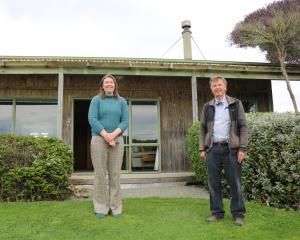It is important to continue to find weed-control solutions in the high country that are less reliant on toxic chemicals, Federated Farmers South Island high-country chairman Chas Todhunter says.
Speaking at the group's conference in Oamaru yesterday, Mr Todhunter said calls to ban glyphosate indicated problems were likely to be encountered with future chemical use.
Other options needed to be worked on and he raised the option of the Department of Conservation using grazing as a tool.
It was not a new suggestion from the group, but he believed a new way of grazing could be used to save money while also helping the environment.
Doc was struggling to do some of the things it needed to do, like weed control - "where a dollar now can save a fortune later'' - due to funding issues.
Mr Todhunter suggested heavy grazing of small areas around infestations of weeds such as broom and conifers to suppress establishment.
"I believe there must be a better way than just chucking chemicals at it until the cows come home,'' he said.
If a buffer zone was fenced and heavily grazed, chemical application could be limited to any weeds that spread outside the zone, or persistent weeds inside it.
Barry Hanson, from Doc, said some research was being undertaken on using stock for management.
Doc was involved in a project with Environment Southland that was looking at using stock to control riverbed environments. Grazing was used as a tool on some occasions, he said.
George Ormond, of Pukaki Downs, a property at the "epicentre'' of the wilding tree spread in the Mackenzie Basin, said landowners must be incentivised to deal with wilding trees. They did not have the funding to deal with such a large problem.
Pukaki Downs, on the western shores of Lake Pukaki, had an initial strategy of containment but did not properly consider the ever-growing volume of seed. It discovered that unless the seed source was dealt with too, containment became "more and more difficult''.
At the time of wilding clearing, visible trees were only one-third or less of the volume of seedlings in the ground.
The property had entered its wilding forest into the emissions trading scheme and got funding to help deal with the issue. About $400,000 was being spent each year and that could not be funded without the ETS, he said.
There were promising new wilding control methods, including bulldozers with crushing forestry rollers. Pastoral intensification was potentially the cheapest and most effective method, Mr Ormond said.
He suggested re-evaluating government policies and rules, such as restrictions on burning, the granting of burn permits during least optimum times, and nitrogen and water policies that prevented the conversion of wilding-infested areas into pasture.












